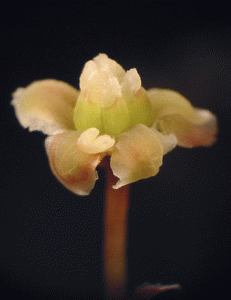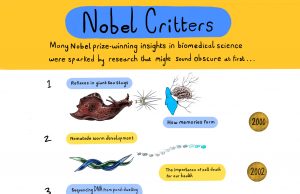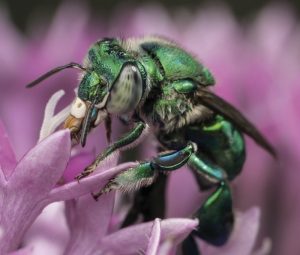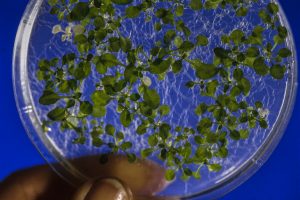Enter your address to receive notifications about new posts to your email.
Science & Publishing
-
Science & Publishing
New in G3: Colombian ancestry, butterfly chromosomes, and mouse reference maps
Check out the October issue of G3! Table of Contents Meeting Report Meeting Report on Experimental Approaches to Evolution and Ecology Using Yeast and Other Model Systems Daniel F. Jarosz, Aimée M. Dudley G3: Genes, Genomes, Genetics October 2017 7: 3237-3241; DOI: https://doi.org/10.1534/g3.117.300124 Genome Report High-Quality de Novo Genome Assembly of the Dekkera bruxellensis Yeast Using Nanopore MinION…
-
Science & Publishing
October GENETICS Highlights
Check out the October issue of GENETICS by looking at the highlights or the full table of contents! ISSUE HIGHLIGHTS Rhythmic behavior is controlled by the SRm160 splicing factor in Drosophila melanogaster, pp. 593–607 Esteban J. Beckwith, Carlos E. Hernando, Sofía Polcowñuk, Agustina P. Bertolin, Estefania Mancini, M. Fernanda Ceriani, and Marcelo J. Yanovsky Animals have evolved neural circuits that allow…
-
Science & Publishing
Why do so many Nobel Prizes go to scientists working on fruit flies?
As night fell, astronomer Jean Jacques d’Ortous de Mairan watched a plant’s leaves, symmetrically arranged side-by-side on a stem, clamp shut. It was 1729, and he was studying the dramatic nocturnal movement of Mimosa pudica. Strangely, he found that the plant behaved the same way even when it wasn’t exposed to natural cycles of light…
-
Science & Publishing
Clues to the innate drug resistance of a cocoa-fermenting pathogen
At first glance, the yeast Candida krusei seems as innocuous as microbes come: it’s used for fermenting cocoa beans and gives chocolate its pleasant aroma. But it’s increasingly being found as a pathogen in immunocompromised patients—and C. krusei infections aren’t always easy to cure. This yeast is naturally resistant to fluconazole, a first-line antifungal that’s…
-
Science & Publishing
An extra chromosome that does double duty
Inheriting an extra chromosome can sometimes be disastrous, but in the September issue of G3, Linder et al. investigate a chromosome duplication that helps yeast survive harsh conditions. Yeast with an extra copy of chromosome IV better tolerate hydrogen peroxide exposure, largely thanks to an extra copy of a gene that detoxifies the chemical. This…
-
Science & Publishing
Behind the cover: orchid bee genome
A green, iridescent bee perches on a pink flower, extending its proboscis to reach the sweet nectar inside. He’s not just after a meal—he’s also collecting fragrant substances to store inside his hollow rear legs. Later, he’ll buzz his wings to release the aroma with the hope of attracting a mate. The cover of the…
-
Science & Publishing
Missing kidney mutation found
It’s surprisingly common for babies to be born missing one or both kidneys; an estimated one in one thousand babies are born with a single kidney. Called renal agenesis, this condition is fatal if both kidneys are missing, and having just one can also lead to serious health problems like hypertension and early renal failure.…
-
Science & Publishing
New in G3: orchid bees, worm sleep, and ghostly fish
Check out the September issue of G3! Table of Contents Genome Reports Whole Genome Sequence of the Heterozygous Clinical Isolate Candida krusei 81-B-5 Christina A. Cuomo, Terrance Shea, Bo Yang, Reeta Rao, Anja Forche G3: Genes, Genomes, Genetics September 2017 7: 2883-2889; DOI: https://doi.org/10.1534/g3.117.043547 The Nuclear and Mitochondrial Genomes of the Facultatively Eusocial Orchid Bee Euglossa dilemma Philipp…
-
Science & Publishing
How model organism researchers can help solve rare disease puzzles
For many of the roughly 300 million people around the world with rare diseases, the road to diagnosis can be long, painful, expensive, and disheartening. Around eighty percent of very infrequently seen undiagnosed diseases are estimated to have a genetic basis, but even with modern DNA sequencing techniques, the causes are often unclear. In these…
-
Science & Publishing
A gene linked to human obesity also controls fat deposition in plants
There’s no such thing as an obese plant. But that doesn’t mean plants can’t teach us something about fat. In the September issue of GENETICS, Ducos et al. show that a protein that controls fat accumulation in humans has a similar function in Arabidopsis. They also find that the human and plant proteins may be…
-
Science & Publishing
Cause of neurological disorder in Belgian Shepherds discovered
Malinois dogs are working animals known for being used by the Secret Service to guard the White House. These dogs, a subtype of the Belgian Shepherd breed, are robust, with an average life expectancy of 10-12 years. But some puppies are afflicted by a genetic condition called spongy degeneration with cerebellar ataxia (SDCA). A puppy…




![Cocoa farmer David Kebu Jnr holding the finished product, dried cocoa beans ready for export. Image by Irene Scott/AusAID [CC BY 2.0], via Wikimedia Commons.](https://s36063.pcdn.co/wp-content/uploads/2017/09/Webp.net-resizeimage-12-300x201.jpg)
![Photo by publicdomainpictures.net. [CC0]](https://s36063.pcdn.co/wp-content/uploads/2017/09/red-doubledecker_770x-300x199.jpg)

![Photo by Hey Paul Studios via Flickr. [CC BY 2.0]](https://s36063.pcdn.co/wp-content/uploads/2017/09/kidney_770x-1-300x233.jpg)



